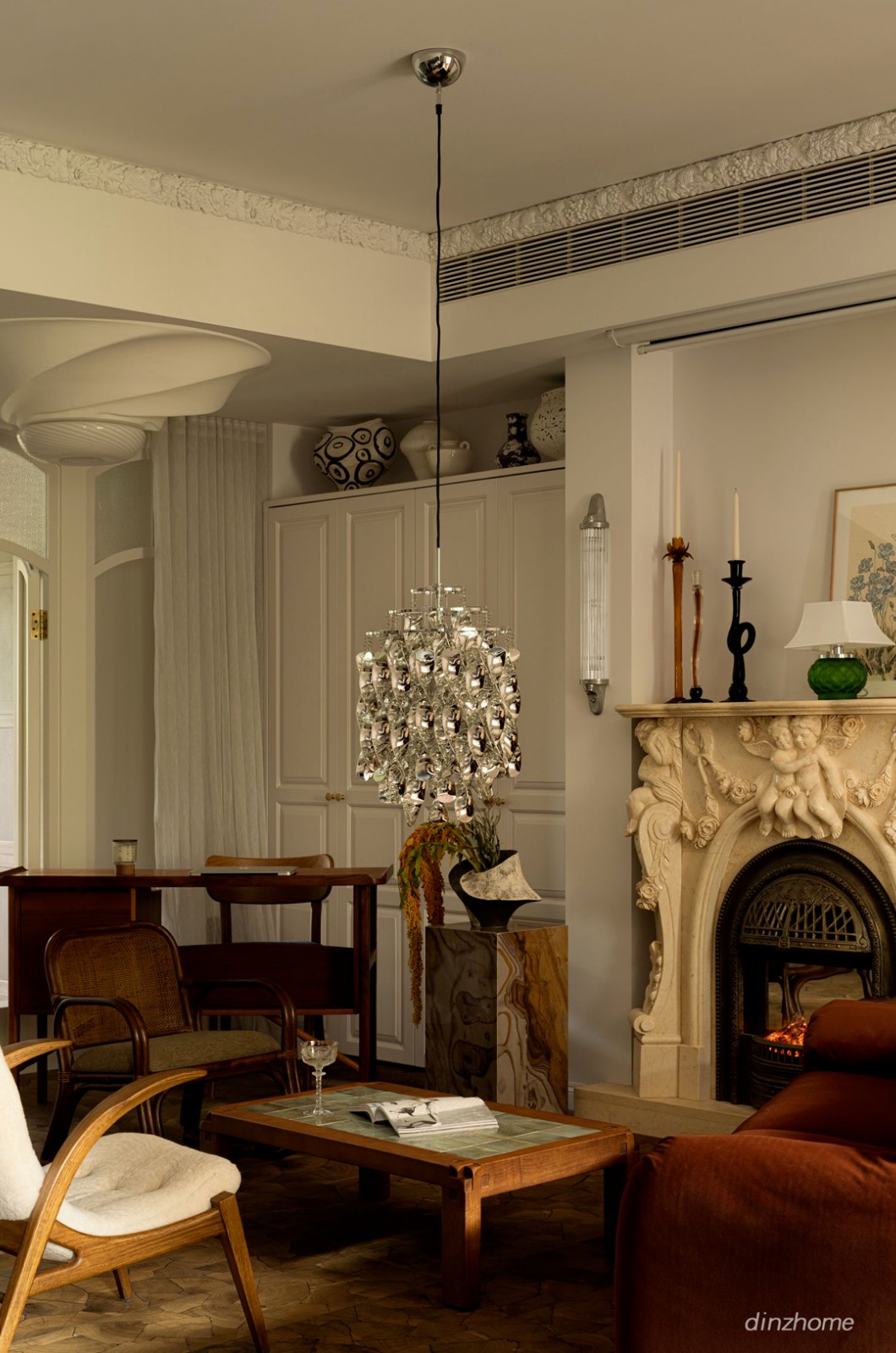Sala Ayutthaya Onion
2015-02-09 01:00
架构师提供的文本描述。Sala Ayutthaya酒店是一家二十六个房间的精品酒店,正对面是泰国的老首都,位于湄南河沿岸,风景如画。普泰山寺是由大城府王国的第一位君主于公元1353建造的。它成为餐厅和河边套房在萨拉的景观。Sala的主要入口在U-thong路的Sala树旁边.这是一个单一的铁门上的一个长砖墙正面,引导我们到低木天花板接待和双音量艺术画廊。在这个空间里,主要的特征是一个古老的木门,洋葱设计的框架。它被放置在透明的镜子之间,通向外面的庭院,被多曲几何图形的平行砖墙缩小。他们勾勒出天空的画面。这个主要循环的独特之处在于不断变化的阴影。两边弯曲的阴影通常在上午十一点左右在地板上相遇。它们在一天中的不同时间改变着空间的气氛。
Text description provided by the architects. Sala Ayutthaya is the twenty-six-room boutique hotel, right across a most picturesque site of the old capital of Thailand along the Chao Phraya River. Phutthai Sawan Temple was built in 1353 AD by the first monarch of Ayutthaya Kingdom. It becomes the view of the restaurant and the riverfront suites at Sala. The main entry of Sala is next to a Sala Tree on U-thong Road. It is a single iron door on a long brick facade, leading us to the low wooden ceiling reception and the double volume art gallery. Within this space, the dominant feature is an antique wooden door that Onion designs the framing for. It is placed between the transparent mirrors, opening to the exterior courtyard, narrowed by the paralleled brick walls of multi-curved geometries. They frame the image of the sky. What is unique about this main circulation is the constantly changing shadows. The curved shadows from the two sides normally meet on the floor at about eleven o’ clock in the morning. They transform the atmosphere of the space at different times of the day.
© Wison Tungthunya
.Wison Tungthunya


从砖墙的院子里看不见潮间河和普泰萨湾寺的全景。只有当我们经过萨拉餐厅走向河边甲板时,才能体验到这一点。在这个地方,我们看到了另一个萨拉的正面,山墙的白色墙,沿着海滨的台阶和梯田的布置。Sala布局是由12个私人住宅组成的综合体,按比例排列在L形土地的有限区域内,将项目的焦点留给户外空间。在印度拉贾斯坦邦Chand Baori Step的启发下,他们展示了当地砖瓦的工艺,与白色墙壁的简洁和整洁并驾齐驱,并解决了每年一度的洪水问题。
The panoramic view of Chao Phraya River and Putthai Sawan Temple cannot be seen from the brick walls courtyard. It can only be experienced when we walk pass Sala Restaurant towards the riverfront deck. At this location, we see another facade of Sala, white walls of gable houses, the arrangement of step decks and terraces along the waterfront. Sala layout is a compound of twelve private residences, proportionately packed within the limited area of L-shape land, leaving the focal points of the project to be the outdoor spaces. They exhibit the local craftsmanship of brickworks, juxtaposed with the simplicity and neatness of the white walls and a solution to the problem of annual flooding, inspired by Chand Baori Step Well in Rajasthan, India.
First Floor Plan
一层平面图


在SalaAyutthaya,台阶甲板被设计成被洪水淹没。他们把我们从一层高的平台上引到河的同一层.四棵名为JIK的红花树被种植在主甲板旁,以表示室外酒吧的位置。沿着狭窄的河岸,洋葱种植了一排热带树,名为克拉丁-南华(其直译为“天使钟”树)。它们钟状的花最终会开花。他们的树枝会向河边垂下,形成一条长长的香树隧道。随着年龄的增长,Sala Ayutthaya将更加完整。
At Sala Ayutthaya, the step decks are designed to be flooded. They lead us down from the one-storey high platform to the same level as the river. Four red-flower trees called jik are planted next to the main deck in order to signify the location of the outdoor bar. Along the narrowed river bank, Onion plants a row of tropical tree named krading-nangfa (its literal translation is the ‘angel’s bell’ tree). Their bell-shape flowers will eventually blossom. Their branches will suspend themselves down towards the river and form a long tunnel of fragrant tree. Sala Ayutthaya will be more complete with age.
© Wison Tungthunya
.Wison Tungthunya


步骤的模式也可以解释为城府架构的一个架构元素。建筑师们借用了普塔泰Sawan Stupa角的缩小尺寸,并对其进行了缩放和重新设计,以便在Sala设计各种物体。这包括内墙和外墙,垂直和水平平面,家具和枕套。这样的重复标志着建筑师们对当代泰国语在功能和装饰意义上的关注。
The pattern of steps can also be explained as an architectural element of Ayutthaya architecture. The architects have borrowed a reduced size of a corner of the Phutthai Sawan Stupa, scaled and redesigned it to frame various objects at Sala. This includes the interior and the exterior walls, the vertical and the horizontal planes, the furniture and the pillow cases. Such a repetition marks the architects’ concern about what contemporary Thai is meant, in both functional and decorative senses.
© Wison Tungthunya
.Wison Tungthunya


洋葱非常注重建筑细节和室内设计。钟形花岗岩灯是Sala餐厅的主要特色。它们是当地一家工厂定制的.吊架的结构模式是基于网格系统的,但是设计看起来是动态的,因为重量的精确位置改变了电缆的形状,从直线式到锯齿形。一只老虎跳跃向前,这在泰国人的信仰中意味着力量,刻在木床的头上。一款名为Luk-Mahuad的泰国装饰品被重新设计成浴室柜台和床的一部分。SalaAyutthaya设计了一个对形式和定制感兴趣的建筑师的角色。
Onion places much attentions on the construction details and interior designs. The bell-shape granite lamps are the main features at Sala Restaurant. They are custom-made by a local factory. The structural pattern of the hangers is based on the grid system, but the design looks dynamic because of the precise positions of the weights that change the pattern of electric cables, from a straight to a zig-zag pattern. The image of a tiger leaping forwards, meaning strength in Thai’s belief, is engraved upon the head of the wooden bed. The section of a Thai ornament called luk-mahuad is redesigned as parts of bathroom counters and beds. Sala Ayutthaya projects a character of the architects who are interested in form and customisation.
© Wison Tungthunya
.Wison Tungthunya


通过流通设计确保了Sala客人的隐私。建筑师决定使用单一负荷走廊,远远少于一系列楼梯直接引导客户到他们自己的卧室。每个卧室总是不同的。至少有三个房间可以直接进入由白色大理石建成的阶梯游泳池。最舒适的是一间较小的卧室,它有自己的私人露台和一张为孩子们隐藏的白昼床。一个更宽敞的房间没有河景,但它的纵向墙面对着游泳池的纵向一侧。在楼上,画廊上方的房间可以鸟瞰砖墙庭院.这间桥房可以鸟瞰游泳池和花园庭院.每个房间的这些特殊特征使客人们重新访问Sala是令人兴奋的。
The privacy of Sala guests is secured through the circulation designs. The architects decide to use a single load corridor much less than a series of staircase that directly lead the clients to their own bedrooms. Each bedroom is always different from the other. There are at least three rooms that have the direct access to the step swimming pool made of white marbles. The most cozy one is a smaller bedroom that has its own private terrace and a hidden daybed for children. A more spacious room does not have the river view, but its longitudinal wall is facing the longitudinal side of the swimming pool. On the upper floor, the room above the gallery has the bird-eye-view of the brick walls courtyard. The bridge room has the bird-eye-view of the swimming pool and the garden courtyard. These special characters of each room make it exciting for the guests to revisit Sala.
© Wison Tungthunya
.Wison Tungthunya


























































.jpg)

.jpg)

Architects Onion
Location Phra Nakhon Si Ayutthaya, Phra Nakhon Si Ayutthaya District, Phra Nakhon Si Ayutthaya, Thailand
Category Hotels
Architects in Charge Siriyot Chaiamnuay & Arisara Chaktranon
Interior Designer Onion, Siriyot Chaiamnuay & Arisara Chaktranon
Area 3500.0 sqm
Project Year 2014
Photographs Wison Tungthunya
























